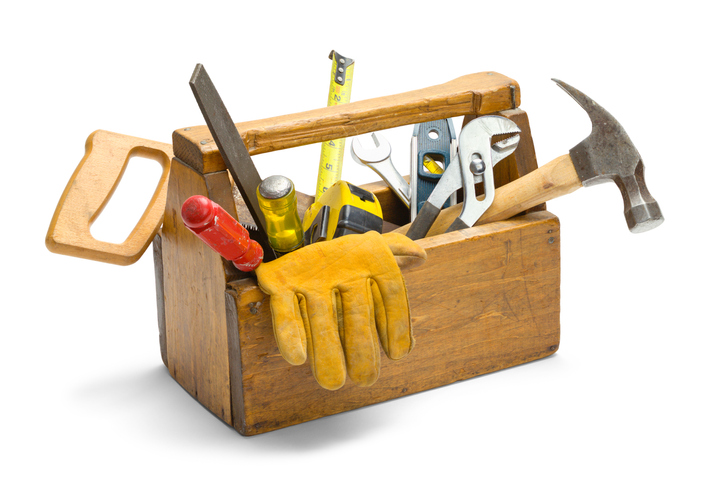Here’s how all the stuff in your garage, shed, and on the truck got their names.

CHISEL
Along with the gentle or aggressive tapping of a hammer, a chisel is used to chip away into very hard surfaces like stone or bricks. In a very slow, even indirect way, chisel cuts into stone, so it makes sense that it’s a variation on an old word from Latin, caedere, which means “to cut.” (Another cutting tool, scissors, shares the same root word.)
HAMMER
In a language that modern day linguists call Proto-Germanic, which spread through Scandinavia around the 3rd century B.C., the word hamaraz, which referred to any tool with a stone head. (In other words, what we today would call a hammer.) As other languages developed out of Proto-Germanic throughout Europe, hamaraz influenced other words, such as hamer in Dutch, hamar in Old German, and hamor in Old English, which evolved into hammer.
From the oddest theories to the most astounding discoveries to the biggest blunders, Strange Science has all the facts your professors didn’t teach you, but should have.
SLEDGEHAMMER
Taking it back to its original, separate root words, this large tool consisting of a heavy metal head on a large wooden handle translates to “to strike with great force with a heavy stone.” The “-hammer” part comes from hammer, of course (see above), while the “sledge-“ has its origins in slaegan, a centuries-old Anglo-Saxon word that means “to strike with great force.”
JACKHAMMER
It’s not named after anybody named Jack. “Jack” is a slang term that means “guy” or “common man,” which dates to 14th century English. Men’s propensity for physical labor led to any sort of mechanical device or tool being referred to as a jack. (One way that’s lasted: the jack that helps in the changing of a tire.) The jackhammer got its name because it’s a mechanical tool that hammers at the ground (and breaks it apart).
BEVEL
The name of this angle-measuring tool is an English version of the French word biveau, which comes from the Latin word batare, which means “to yawn.” In other words, a bevel in use gapes open, and looks like a yawning mouth.








